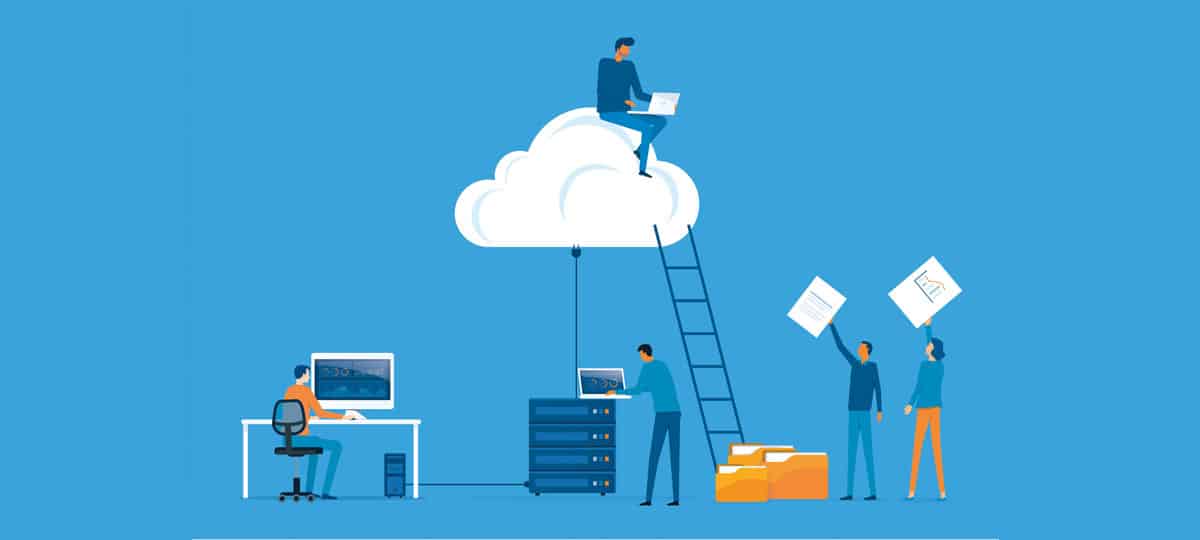Rise in the cloud


Opportunities and pitfalls of "RISE with SAP
The cloud is considered the heart and brain of digital transformation. That is the opinion of SAP. Or as the software group puts it: we need "business transformation as a service". The Walldorf-based company's answer to this challenge is: "Rise with SAP".
What is "Rise with SAP"?
With Rise with SAP, the software group wants to make the move to the cloud palatable for its customers. To this end, SAP bundles various services and sells them as a package. In addition to the in-house S/4 Hana cloud as the core of the offering, Rise with SAP includes a migration and implementation service, access to the SAP Business Technology Platform (SAP BTP), the SAP Business Network (including Ariba) and Business Process Intelligence (SAP BPI). Rise with SAP can be hosted on the company's own ERP cloud, but also on a hyperscaler such as AWS, Microsoft Azure or Google Cloud. The offering is based on a subscription model. Companies of all types, industries and sizes should benefit from this.
Take off without further ado?
What are the advantages of bundling services in this way? Three types of benefits can be identified: contractual, operational, and business. The most obvious benefit is contractual simplicity. Companies have only one contractual partner, SAP. This means they do not have to sign individual contracts for hosting, support, technical operations or additional service licenses. This streamlines the contractual structures. And ideally, costs can be saved.
One contractual partner means one point of contact. SAP becomes the central point of contact for all questions - from hosting and operation to support. The software group promises continuous, individual support. This makes the operation of the infrastructure and software solutions more secure. In the event of problems, you know - in theory - who to contact. This is important because digital transformation is not a one-off project, but an ongoing process. Rise with SAP aims to provide the foundation for this.
And here we come to the central advantage of Rise with SAP according to the company's own communication: With the complete package, companies accelerate their digital transformation.
"As-a-Service?
So: Everything is or will be fine with Rise with SAP? And at lower cost? Unfortunately, it's not that simple.
Customers need to be aware that they are committing to a predefined operating model that may conflict with individual specifications. Prior to operation, questions companies should ask themselves include: Can other projects run on the operating model? Will applications like PDF generation work with an open source add-on? Is it enough if we only reach SAP via sFTP?
While SAP touts its product as "business-transformation-as-a-service," Rise customers tell us about the lack of "service" in implementing external applications as well as customer specifics. This is where SAP's marketing communications can quickly mislead: After all, large companies that are used to full-service providers expect more service than Rise with SAP actually offers so far. The supposed idea that "Rise" saves on the SAP basis is only partially true. For example, SAP expects precise specifications for implementations. This requires considerable knowledge. Without in-house or external SAP Basis experts, this is a major challenge. For many companies, this is likely to be a high hurdle in times of a shortage of skilled workers. Costs that are difficult to calculate or application problems can be the result. What used to run smoothly can falter.
Workload Automation in "Rise with SAP"?
What about automation tools? The limited access in SAP operations makes the work of the commercially available tools more difficult. Especially when end-to-end processes are to be handled. For example, Managed File Transfer usually has to be set up again. The connection to the mainframe is also often only possible via proxies. And some legacy interfaces are no longer available at all. This means that automation tools can no longer be accessed from the outside via known paths. The legacy area in particular sometimes requires a lot of creativity to find a solution. This should definitely be considered and planned for in the projects. HONICO BatchMan customers get out of this situation very comfortably: The add-on was Rise-compatible from the beginning, because it acts from the SAP systems.
So let him who commits himself be tested
SAP is currently luring customers with attractive, scalable prices for license migration to Rise with SAP. But - as we know - not everything advertised as a "welcome offer" turns out to be a bargain. With migration usually comes a "contract conversion." Companies move from asset ownership to a subscription model - with all the drawbacks. In the future, companies will be forced to go along with update cycles. And they are subject to possible price increases. In addition, customers are switching to a new, role-based model of user metering, and with it, billing in FUEs (Full Usage Equivalents).
The customer receives no support from SAP in defining and establishing the new roles. For companies without the relevant experience, this is an almost impossible undertaking. HONICO, which has been active in the entire SAP landscape for years, is currently working with its customers to develop a real consumption measurement of authorizations. The interesting question then becomes whether SAP really expects to cut the roles small again for each user, because this actually contradicts the purpose of a role as a collection object. If no compromise is reached here, customers will very likely pay a price in the new licensing model.
In summary: Rise with SAP offers enormous opportunities - especially in terms of scalability and clean operation. But: Companies must be aware that they are committing themselves for the long term. They are forced into a corset. This often minimizes competitive advantage and creates costs elsewhere. It is perhaps a bit like Goethe's fisherman's wife: Half she pulled him, half he sank.





